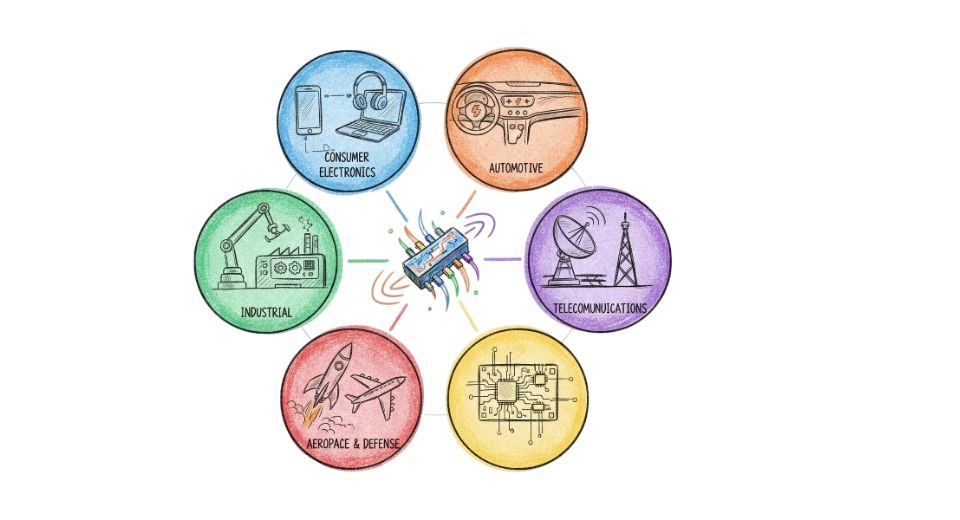
Oct 26, 2025

In a universe where electronic systems form the bedrock of everything from smartphones and electric cars to data centres and medical equipment, the Metastat Insight report on the global eFuse market comes at the perfect time. With increasingly complex circuits and rising power requirements, protection devices such as electronic fuses are coming into their own. The worldwide eFuse market as reported by Metastat Insight represents this increase in significance, showing how such devices are no longer specialty but integral to contemporary design.
Market context: why concern about eFuse is on the rise
Contemporary electronics encounter an increasing number of challenges. High-current/voltage designs and dense PCB arrangements generate more potential for overcurrent, short-circuit or thermal fault situations. Concurrently, end-users and businesses anticipate high reliability, low downtime and small-footprint solutions. That's where solid-state protection products like eFuses step in. The move away from dumb mechanical fuses towards more intelligent, responsive protection modules answers industry call for real-time diagnostic functionality and system guarantee in mission-critical applications. The worldwide eFuse market gathers steam as more electronics need resettable, accurate fault-isolation instead of one-time protection, the report says.
How the solutions work and where value is created
In short, an eFuse substitutes or augments a conventional fuse with a semiconductor-based solution to protect against overcurrent, overvoltage, reverse current and thermal fault conditions. In contrast to a typical fuse that is blown and needs to be replaced, numerous eFuses have resettable or auto-retry behaviour, status signalling, and fine-grained monitoring.
This renders them particularly useful in applications where component replacement is not feasible (data centres, automotive ECUs, aerospace electronics) or where space is limited (portable devices, wearables). Statistics indicate that the "auto-retry" type segment is dominant due to the strong value of automatic recovery and low intervention. The distinguishing strengths are higher reliability, system-health feedback, quicker recovery to faults and applicability to high-density electronics. Applications cover consumer electronics, automotive & transportation, healthcare devices, and IT & telecommunications systems.
Growth story and technological evolution
Intelligent eFuses adoption started discreetly in niche high-reliability applications or high-end electronics but gradually the technology evolved. Packaging advancements (small outline no-lead, dual-flat no leads, quad-flat no leads) and diagnostic integration have expanded the use.
To illustrate, the report on eFuse market describes that as devices get smaller and voltages change (such as higher voltage architectures in electric vehicles or data centers) the intelligent protection has an increasingly important role to play.
Evolution over time from mere protective function to intelligent monitoring, reset functionality and integration into power-management systems has consolidated the position of eFuse in the design landscape.
Adoption region and global trends
Geographically, North America has been a very strong market led by advanced data-centre infrastructure, automotive electrification and semiconductor innovation. North America had the largest share in 2024, according to one source. Asia-Pacific is meanwhile becoming the fastest-growing market due to rising electronics manufacturing, growing vehicle electrification and a growing demand for consumer devices. Reports point to China, India, Japan and South Korea as especially dynamic markets for eFuse solutions.
Beyond these, opportunities are emerging in the Latin America and Middle East & Africa regions where electronics and vehicle electronics penetration are gaining momentum albeit at lower absolute rates.
Challenges and opportunities ahead
Strong growth prospects notwithstanding, there are still barriers to penetration. Cost sensitivity is a major barrier most designs continue to use cheaper discrete or polyfuse solutions over higher-end eFuses in cost-sensitive applications. Furthermore, qualification and regulatory requirements (particularly in automotive, aerospace and medical industries) introduce longer design-in cycles. Conversely, opportunities are unlimited: innovations like smart eFuses with built-in diagnostics, 48-V vehicle architecture compatibility, and synergism with IoT and edge-computing electronics could drive the segment. The increasing adoption of electric and autonomous cars, healthcare demand for high-reliability electronics and the move to digital infrastructure all favor penetration of advanced protection devices.
Why this is relevant today
The Metastat Insight global eFuse market indicates more than mere component expansion it indicates wider sustainability, digital transformation and system reliability trends. As electronics spread into every aspect of life connected vehicles to intelligent homes, cloud data centers to health monitoring the need for safe, reliable power and fault protection grows.
eFuses are thus not just placed as incremental parts but as the facilitators of future-generation systems that need to be small, smart and robust. The Metastat Insight report emphasizes the way the market is transforming to address those needs and illustrates the protection-component layer becoming more strategic in determining the future of electronics.
Drop us an email at:
Call us on:
+1 5186502376
+91 73850 57479